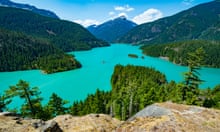Plans to build a huge hydroelectric dam in the Amazon have been put on hold after Brazil’s environmental agency, Ibama, suspended the licensing process over concerns about its impact on the indigenous community in the region.
As one of the central elements of the government’s project to expand hydroelectric power generation across the Amazon, the 8,000-megawatt São Luiz do Tapajós dam is slated to be Brazil’s second largest, after the controversial Belo Monte power plant, which finally began operating this week.
But in a letter sent this week to the heads of Eletrobrás, the state energy company, and Funai, Brazil’s agency on indigenous affairs, the Ibama president, Marilene Ramos, stressed the “unviability of the project given the indigenous component”.
Around 10,000 Munduruku people live around the river Tapajós. The dam would flood a vast area, requiring the forced removal of at least some indigenous communities, an act that is strictly prohibited by the Brazilian constitution except in cases of disease epidemics or war.
The Munduruku’s attempts to preserve their land have been hamstrung by the government’s decade-long refusal to recognise their territory, prompting the community to carry out its own demarcation process. But in another success for the Munduruku this week, Funai has published an initial report that defines about 170,000 hectares as Sawré Muybu indigenous land.
“The publication of this report is highly significant,“ Brent Millikan, the Amazon programme director from the NGO International Rivers, said. “This throws a monkey wrench into the licensing process. It shows that there is a constitutional right that needs to be respected.”
According to Ramos, the future of the licence now depends on the “final report” produced by Funai. But if the indigenous affairs agency confirms the status of the land, campaigners believe it will be difficult for the government to circumvent the constitution.
“Brazil’s constitution is quite progressive in recognising indigenous peoples and their rights,” Millikan said. “Only in very unusual circumstances could their land be exploited and only after approval by congress.”
At present, however, the greatest obstacle to further development of the Amazon basin is economic. After the years of lawsuits that dogged the Belo Monte dam, energy and construction companies may be reluctant to risk large amounts of money on impact assessment studies for a project that may never be realised, particularly in the middle of an economic crisis.
“These dams were planned when the government expected a rise in energy demand based on growth of 4% a year,” Márcio Santilli, a founding partner of the not-for-profit Instituto Socioambiental (ISA). “But in 2015 GDP shrank by 3.8% and the projections for 2016 indicate a similar drop.”
But while the recession may have forced a pause in the development of the region, Brazil’s political crisis, which looks set to see President Dilma Rousseff removed from office next month, could change that dynamic.
“We are living in a moment of great instability,” Santilli said. “Potentially, a new Ibama president could reverse the decision.”
Earlier this week, Eduardo Braga, Brazil’s minister for mines and energy, left the government. He may not be replaced until after the senate votes on whether to impeach President Rousseff in mid-May
Added to this uncertainty, a strategic development law, known as PLS 654/2015, currently being debated in the senate, could significantly accelerate the licensing process, by reducing the environmental protections enshrined in Brazilian law, and eliminating the requirement for public consultation.









Comments (…)
Sign in or create your Guardian account to join the discussion